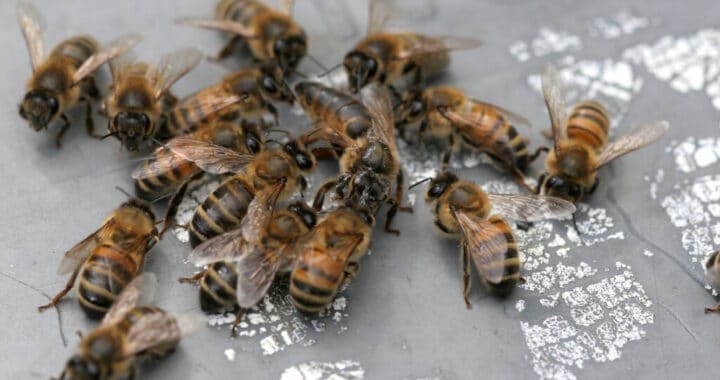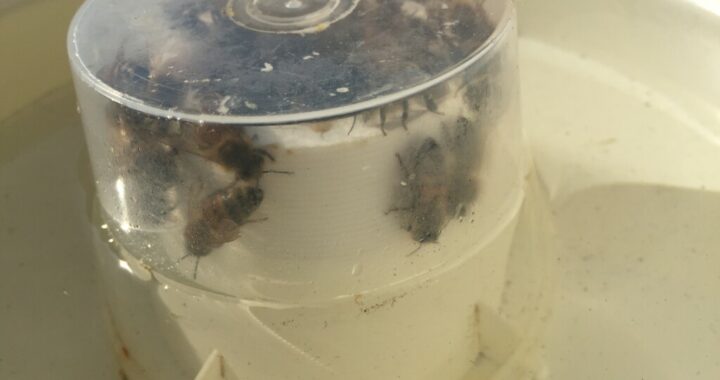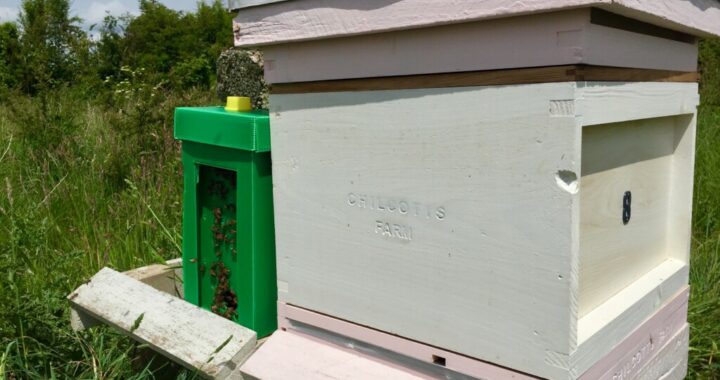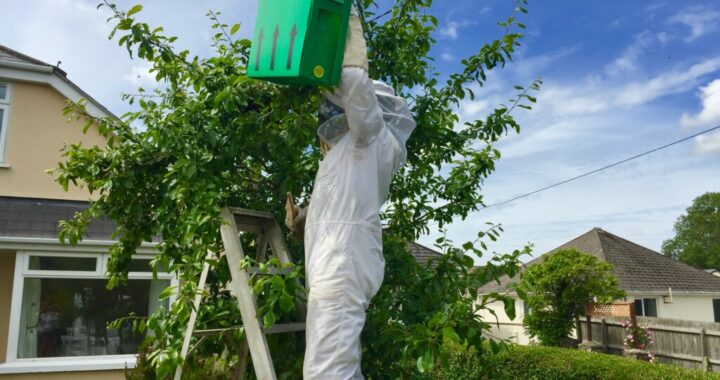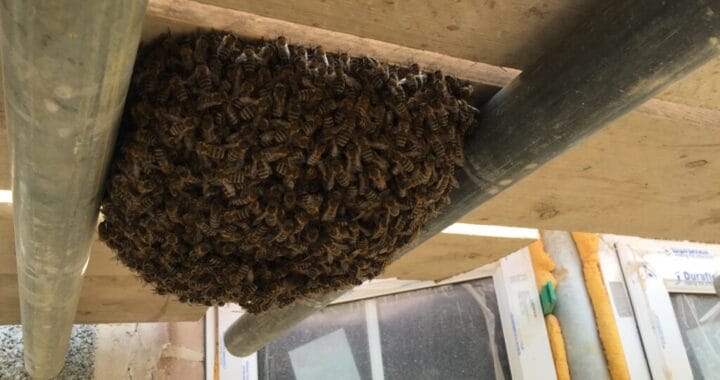The #BidefordHoneyBeeSwarm, collected from Bideford in Devon, has settled into its new hive nicely.
With the poor weather, I have continued to feed the bees, which has enabled them to build comb quite rapidly.
I inspected the bees last Sunday to discover a whole frame (both sides) full of sealed brood (bee larvae) and a large Healthy Queen bee walking around. This is a very positive sign!
I often get asked “What does the Queen look like?”. In this picture, in the middle, you can see a Queen Bee that has just returned from a mating flight.
Surrounded by attentive workers, she will soon get slightly bigger to the extent that she is unable to fly. At her peak she could be laying in the region of 1,000 eggs a day!

